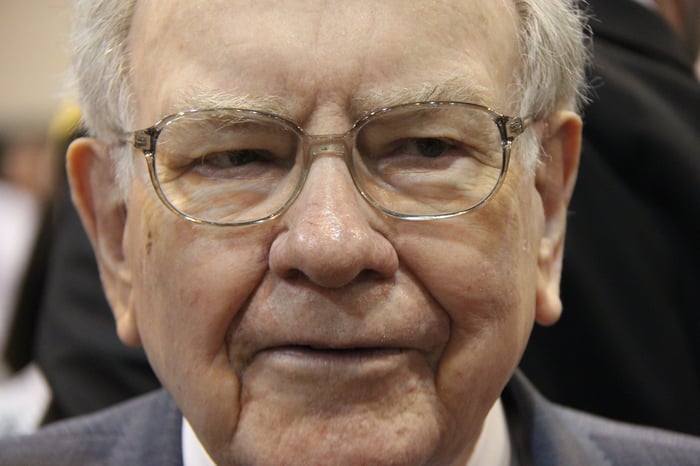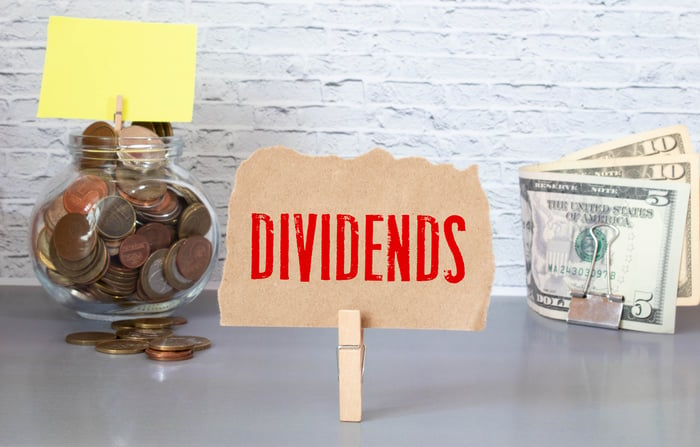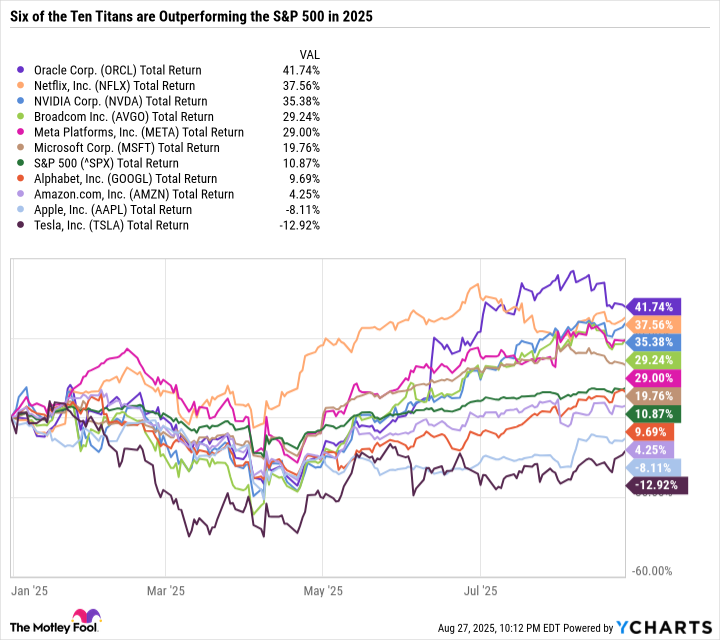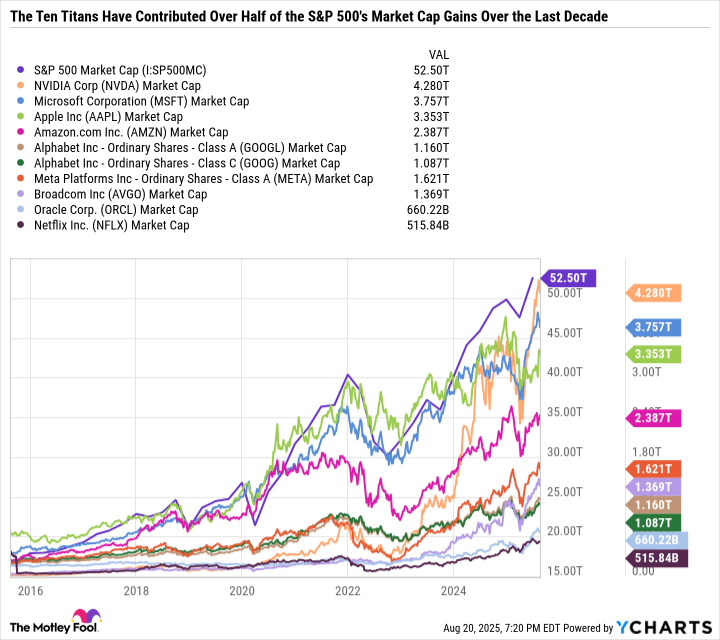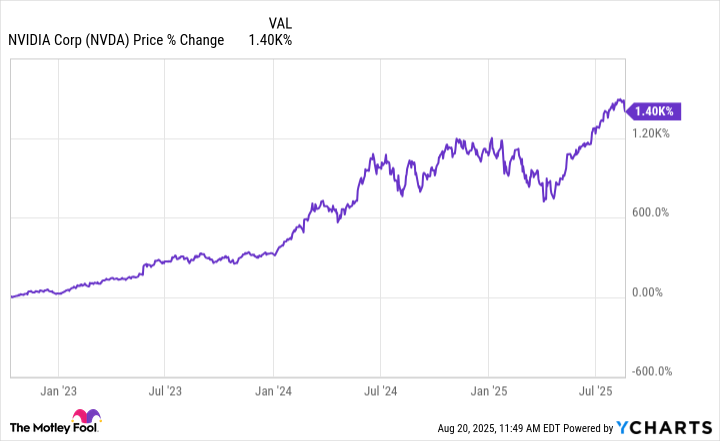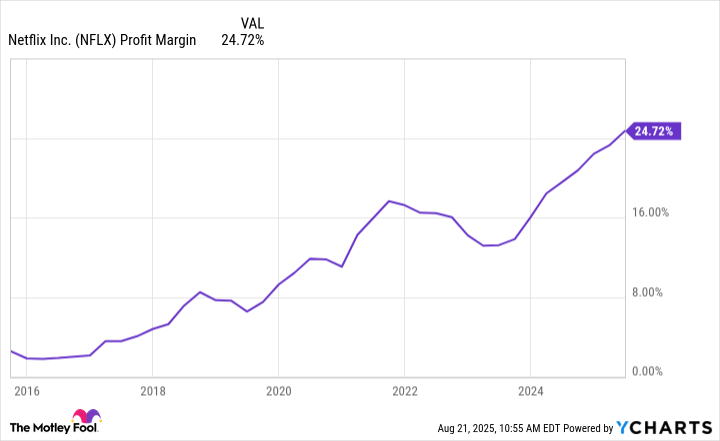These AI leaders boast wide moats, and their stocks trade for excellent value right now.
For all the attention artificial intelligence (AI) has received over the last three years, it’s possible we’re still very early in the spread of the technology. Just 9.2% of the 1.2 million U.S. businesses surveyed by the U.S. Census Bureau in June said that they have adopted AI in parts of their operations. That number continues to climb every quarter, though.
There’s a long runway ahead for AI, but that doesn’t make every stock in the space a long-term winner. It’s likely AI stocks will face some major headwinds at some point in the not-too-distant future. Sam Altman, CEO of OpenAI, says we’re currently in a bubble, but that doesn’t diminish the long-term importance of AI innovations.
The best AI stocks are well-positioned to capitalize on the current environment of growing adoption and tremendous innovation, but also maintain long-term competitive advantages that will ensure they remain great investments well into the future. On top of that, they have to offer good value that growth investors expect to receive. Many AI stocks are arguably overpriced, but here are three worth buying right now.

Image source: Getty Images.
1. Microsoft
Microsoft (MSFT 0.56%) increased its investment in OpenAI in early 2023, which gave it both a major customer for its cloud computing segment, Azure, and the ability to quickly build new AI services for both Azure and its enterprise software segment. The company has produced tremendous results on both fronts.
Azure is now a $75 billion business, with revenue increasing 34% year over year in fiscal 2025. Not only is Microsoft growing a $75 billion business that quickly, but it’s also accelerating revenue. Azure sales grew 39% year over year in its most recent quarter. Revenue could continue to speed up as management reiterated that the cloud business remains capacity-constrained on its most recent earnings call.
Microsoft is spending heavily to support that growth. Management expects capital expenditures (capex) for the current quarter to climb to $30 billion, jumping from $24 billion last quarter.
But the top-line growth for Azure appears to be worth the up-front spending. Remaining performance obligations climbed 35% last quarter, so there’s still a lot of unearned revenue for Microsoft to realize. Management expects another strong quarter for Azure with 37% revenue growth.
Microsoft’s enterprise software business has also benefited from developing new AI services. The company has created its own suite of AI assistants for use across its software, dubbed Copilot, which provides a way to increase revenue per seat while further locking in customers.
But the real potential may be in its Copilot Studio software, which allows businesses to use foundation models like OpenAI’s GPT-5 to create their own AI agents using proprietary data. Microsoft’s Productivity and Business segment grew 16% last quarter, and management expects to maintain similar growth this quarter.
Both the near-term and long-term look good for Microsoft, with strong growth for Azure and Microsoft 365 driving tremendous free cash flow despite huge capex. The stock currently trades for almost 33 times forward earnings estimates, which is certainly a premium to the market.
But with expectations for double-digit revenue growth, steady operating margins, and plenty of cash to buy back shares, the stock price looks more than fair.
2. Alphabet
Many expect AI to negatively affect Alphabet (GOOG 2.98%) (GOOGL 3.10%) as chatbots displace its core Google Search, but that’s yet to happen. Google Search revenue increased 12% year over year in its most recent quarter, accelerating from 10% growth in the first quarter.
That strength is driven by Google’s efforts to integrate generative AI into its search product. Its AI Overviews have driven higher engagement and user satisfaction, according to management. And AI-powered features like Circle to Search and Google Lens have increased search traffic for high-value products. Google’s new AI Mode pushes users into a more robust AI-powered search, similar to Perplexity.
The real growth driver for Alphabet is its cloud computing platform, Google Cloud. The business grew 32% last quarter and demonstrated strong operating leverage. Operating margin expanded to 21% from 11% last year and 18% last quarter. Based on earnings results from competitors, there’s still a lot of room to increase those margins as well.
Alphabet is also spending heavily to keep up with demand for its cloud AI services. Management increased its capex guidance for the full year to $85 billion from $75 billion.
That spending may be weighing on the stock, but the biggest things burdening Alphabet are regulatory concerns. Last year, the courts determined Google operates an illegal monopoly, and it faces remedies that could involve divesting key assets. Some have speculated it may have to sell Chrome, its web browser, for which Perplexity made an offer of $34.5 billion.
Despite the overhang, Alphabet shares look very attractive. The stock price is just 20 times forward earnings estimates. That’s below the S&P 500 average and the lowest among the “Magnificent Seven” stocks. That price more than factors in the uncertainty around Google and offers a significant discount on the fast-growing cloud computing business.
3. Taiwan Semiconductor Manufacturing
Taiwan Semiconductor Manufacturing (TSM 2.49%) has seen demand for its industry-leading chipmaking capabilities surge as companies like Microsoft and Alphabet look to stock their data center servers with high-end GPUs, networking chips, and other silicon. That has pushed the already high market share of TSMC (as it’s also known) to new levels, with the company commanding over two-thirds of all spending on contract semiconductor manufacturing.
TSMC’s massive technology lead benefits from a virtuous cycle. Its technology attracts big contracts from chip designers like Nvidia and Apple. In turn, it can invest more in building out capacity and developing the next-generation technology. That ensures that it’s well-positioned to win the next contract from those big customers while attracting new customers as well.
Just like Microsoft and Alphabet, TSMC is also spending heavily to meet demand for its services. Management expects to spend around $40 billion this year to build out capacity, including ramping up its next-generation 2nm node, which promises better performance while using less power. That capex budget is a 34% increase from last year.
After strong second-quarter results, management raised its full-year revenue growth guidance to 30% from the mid-20% range. The long-term outlook remains strong as well, with expectations for 20% average annual increases from 2025 to 2029. That number may be revised higher since it’s shown strength in the AI market, which is driving a good amount of that rise.
And TSMC’s gross margin has climbed close to 60%. While the company typically sees a drop in gross margin as it ramps up a new node, it’s already seeing strong demand for its 2nm chips and charging a hefty step-up in price. As a result, the company should be able to maintain very high gross margins in 2026 and beyond.
Investors can buy shares for just 23 times forward earnings, an exceptionally low price for a company growing this fast with a long runway ahead of it. Investors may be keeping the price low due to the threat of tariffs on the company’s finances. TSMC received an exemption from tariffs on semiconductors thanks to its huge investment in its Arizona manufacturing center.
Even if it is subject to tariffs in the future, TSMC remains the best-in-class chip manufacturer and an essential company in the future of AI. As such, it can blunt the financial impact, and it looks like a great buy at today’s price.

